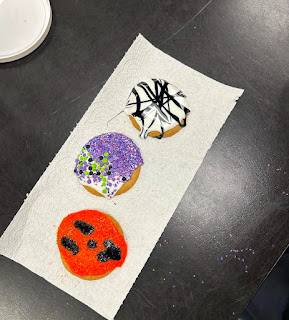Google, best known for its wildly popular search engine, its ownership of Youtube, and the development of the Android mobile operating system, is giving the social-network business another shot, opening its Google+ social network to the public. Though previous attempts to gain traction against the more-popular Facebook and the older Myspace have failed, this third time may be the charm, as Google grapples with the gripes many Facebook users have had and works to prepare a better product.
Some Seminoles have been members of Google+ since it opened to the public on an invitation-only basis about two months ago, while others are joining now. Google+ has been open to anyone wanting to sign up since September 20, 2011.
To cope with the security and privacy concerns expressed by users of Facebook (which was ranked in the bottom five percent of all private companies assessed by the American Customer Satisfaction Index, according to CBS News), Google has made it a priority to address these concerns, and to try to produce a more easy-to-use and privacy-friendly product.
Dealing with Facebook’s frequent layout shifts has even become a sort of cultural phenomenon. Webcomics like this and pictures like this detail the frustration of users trying to adapt to these changes. Sophomore Saurabh Sudesh noted that Google+ is “nice,” especially in light of Facebook’s “serious interface changes.”
While Facebook has often been criticized for not allowing users to easily select what was shared and with whom, Google+ makes the creation of separate “circles” of friends the forefront of its interface. When Google+ users first want to connect with someone on the network, they must choose the circle in which to place their new friend.
Many of Google’s advertisements for the service highlight the ability to choose the communities with which status updates, pictures, videos, and events are shared. The circles that are automatically created for users, with names like “Friends” and “Family,” give an impression of the feature’s potential applications.
As concerns grow over the trail of photos, posts, and notes that people leave behind online—some more compromising than others—it is easy to see why these features have such broad appeal. Especially at Seminole High, where much of the student population has its mind on college admissions, looking good online while still being able to connect with friends is a priority. By selecting who gets to see what, students applying for colleges can keep whatever aspects of their life they want private from admissions offices, just as they would be able to in a world without social networking.
Google also offers a service called Google+ Hangouts, which offers group videochatting with up to 10 participants, something that no other social network has yet. Providing a chance for friends to connect in a truly novel way, the feature lets users show pictures, and even share Youtube videos (another Google-owned service). Freshman Diptodip Deb has used Google+ Hangouts, and commented that “it’s a bit memory intensive,” but still is “something [I’ve] waited to see in a product for a while.”
Other ‘Noles are disappointed by the social network’s size. Because it is so new, it hasn’t attracted a community large enough to sustain activity. Sophomore Ishika Khondaker said that she prefers using Facebook to chat with people, because “more people have Facebook accounts right now.” Similar feelings echo throughout the Google+ community; senior Ben Truckenbrod remarked that “Facebook is a dystopian metropolis, and Google+ is a barren utopia.” Sophomore Emily Johnson also said, “It’s really nice, but it’ll take a long time to get the following Facebook has.”






















